
Photographica Pages
An online guide to collectable cameras and related stuff
Leica M3
The M3 was the biggest improvement in the Leica since the rangefinder was added in 1932. It was
introduced in 1954, and it spelled the end of the screwmount line. The IIIg was introduced later, but
only to pacify those with screwmount systems.
Improvements over the IIIf , the current flagship of the Leica line are numerous. The finder was vastly
improved. It became a larger, combined rangefinder and viewfinder with framelines that are keyed by
mounting different focal length lenses, and which are parallax corrected. The framelines may be
preselected for framing with a front mounted lever. The finder shows the field of view of the 50mm lens,
with framelines for 90mm and 135mm. Wide angle lenses had optics attached to the top of the barrel
that would convert the finder to 35mm. These optics are referred to as "eyes" or "spectacles".
This was the first model of Leica to use a rapid lever advance instead of a knob. Early cameras were
"double stroke", requiring two short pulls on the lever. After camera number 915,251, it was changed
to a single stroke. The engineers thought that a single stroke would tend to tear out sprocket holes in
the film.
This was also the first Leica to use the new shutter mechanism in which all of the shutter speeds are on
one dial, which does not spin during winding and firing. On previous models the shutter speeds were
split, with the slow speeds on a dial on the front, and the fast speed dial turned with the shutter, which
allowed you to set the shutter speed accurately only when the shutter was wound. The non-spinning
shutter also allowed for a clip on exposure meter to couple with it. The shutter speeds changed at
camera 854,001 to a more mathematical progression.
The lens mount was changed from the old 39mm thread to a quick change bayonet. Adapters are
available to use the screw mount lenses. Back focus remained the same, and they still couple to the
rangefinder.
The camera still loads from the bottom, but a back door of sorts opens to take some of the guesswork
out of loading. The openning the door also resets the film counter.
There are some smaller variations, such as early teardrop shaped, and later round strap lugs, and a
change from early glass pressure plate to metal. Production started at camera 700,000, and very
early cameras have many differences than later ones. Production ended at camera 1,158,995. Many
people consider this the finest rangefinder camera, or even camera of any sort ever built, not just for
features and design, but for quality of construction as well. Cameras with serial numbers over
1,000,000 command a premium, and cameras over 1,100,000 a greater premium yet.
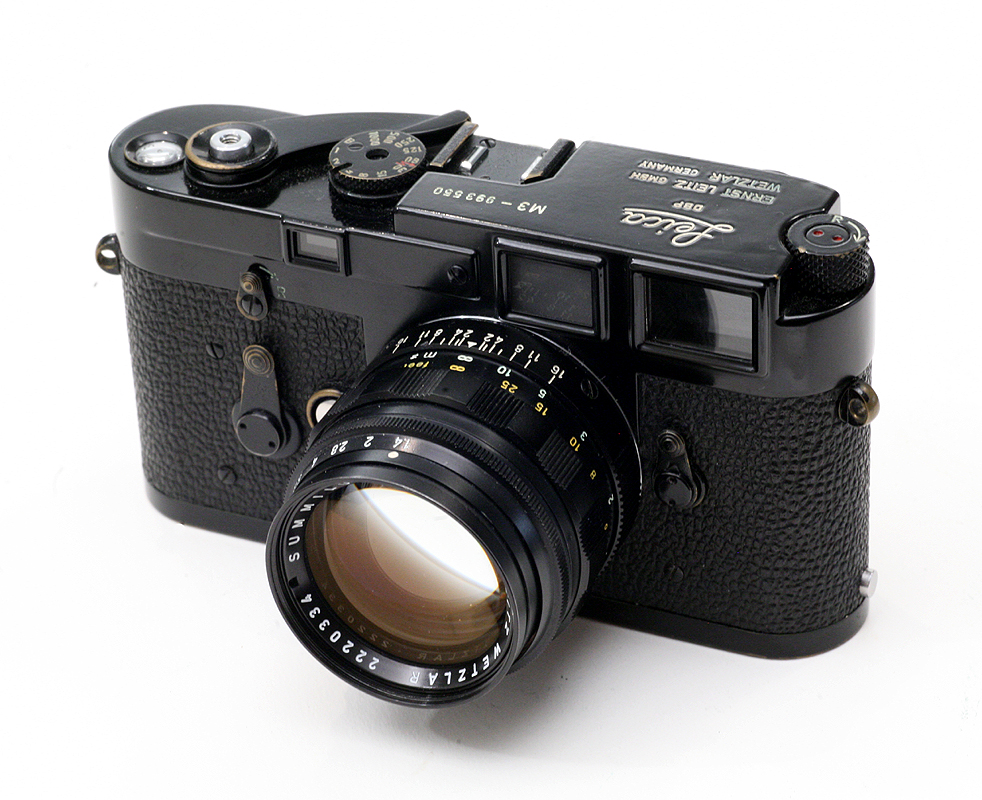
A black Leica M3 with a black paint 50/1.4 Summilux.
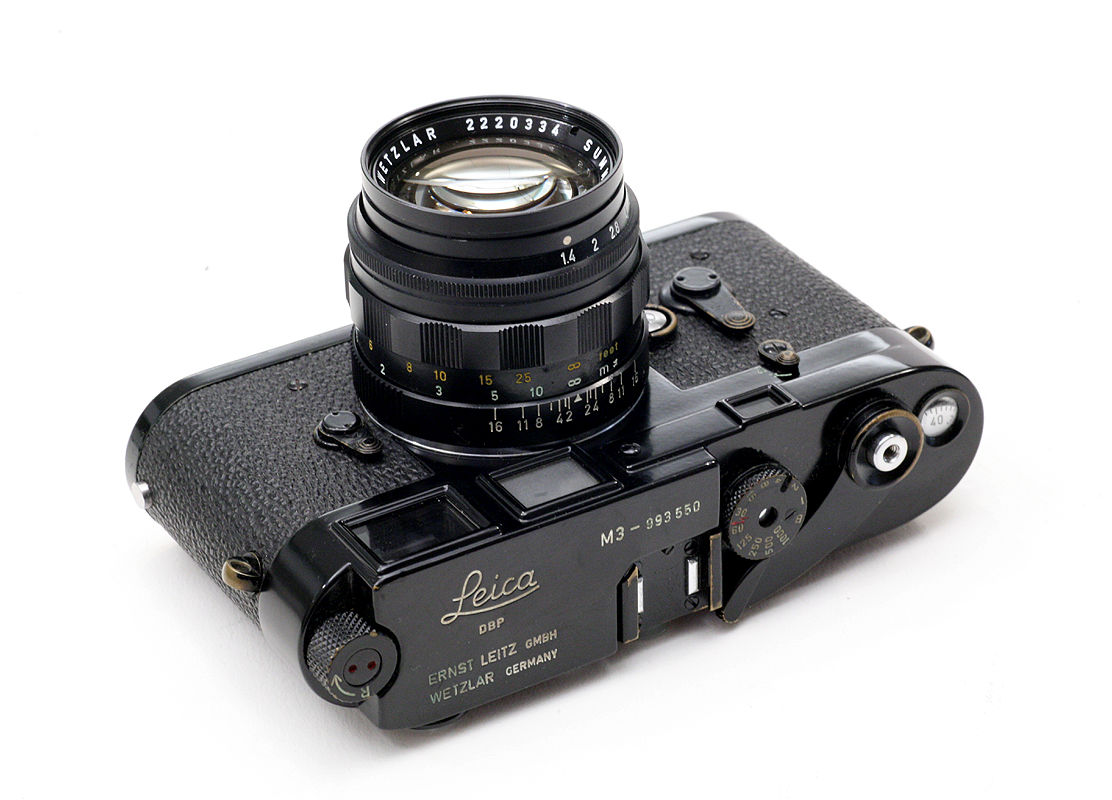
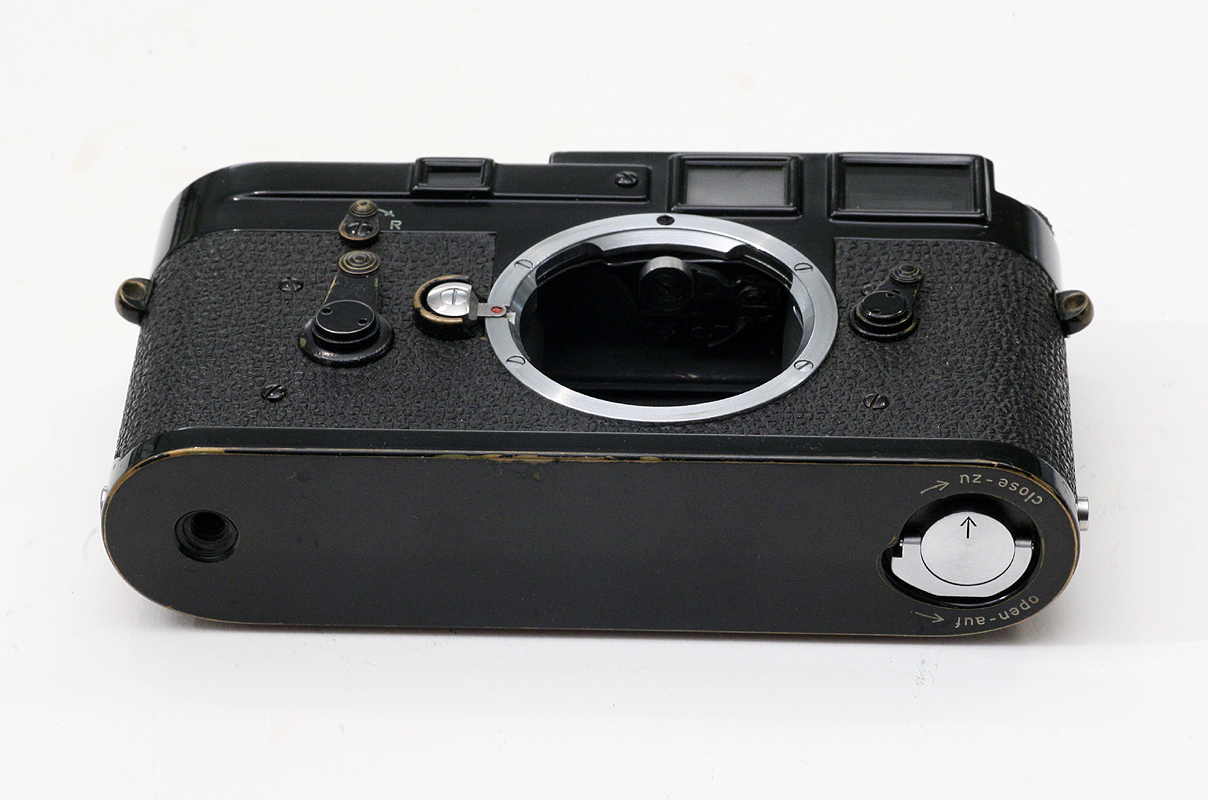
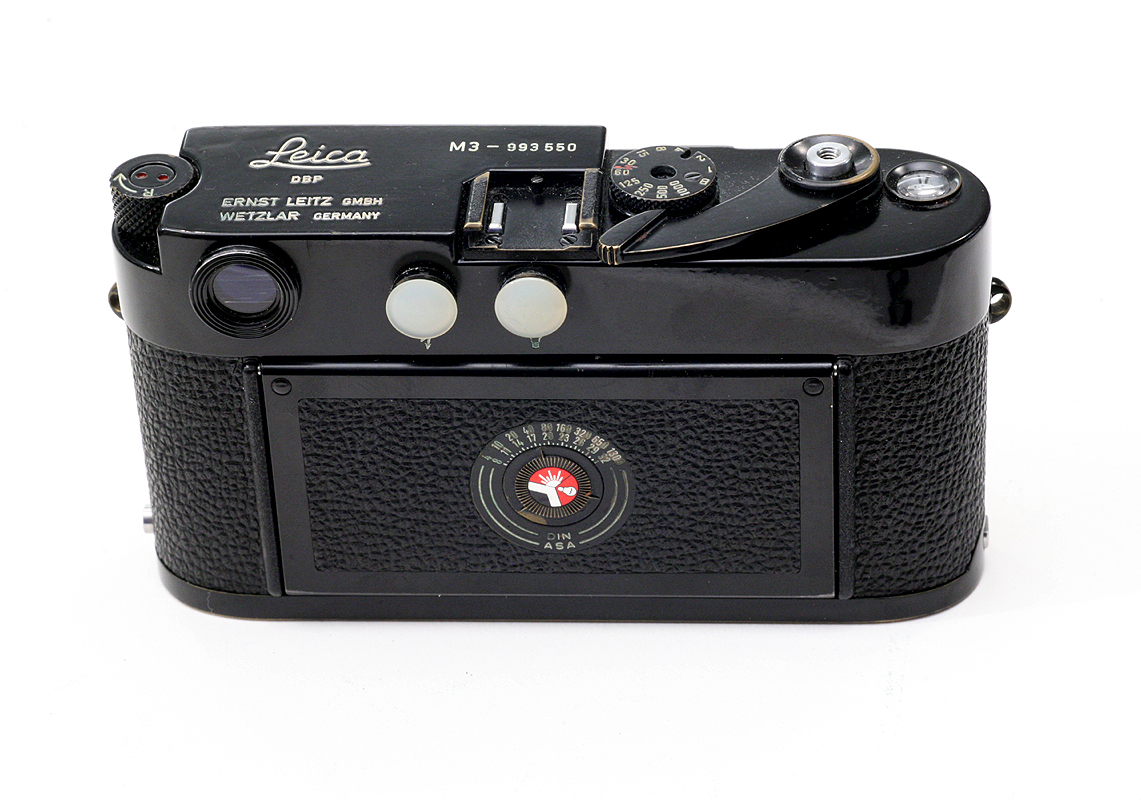
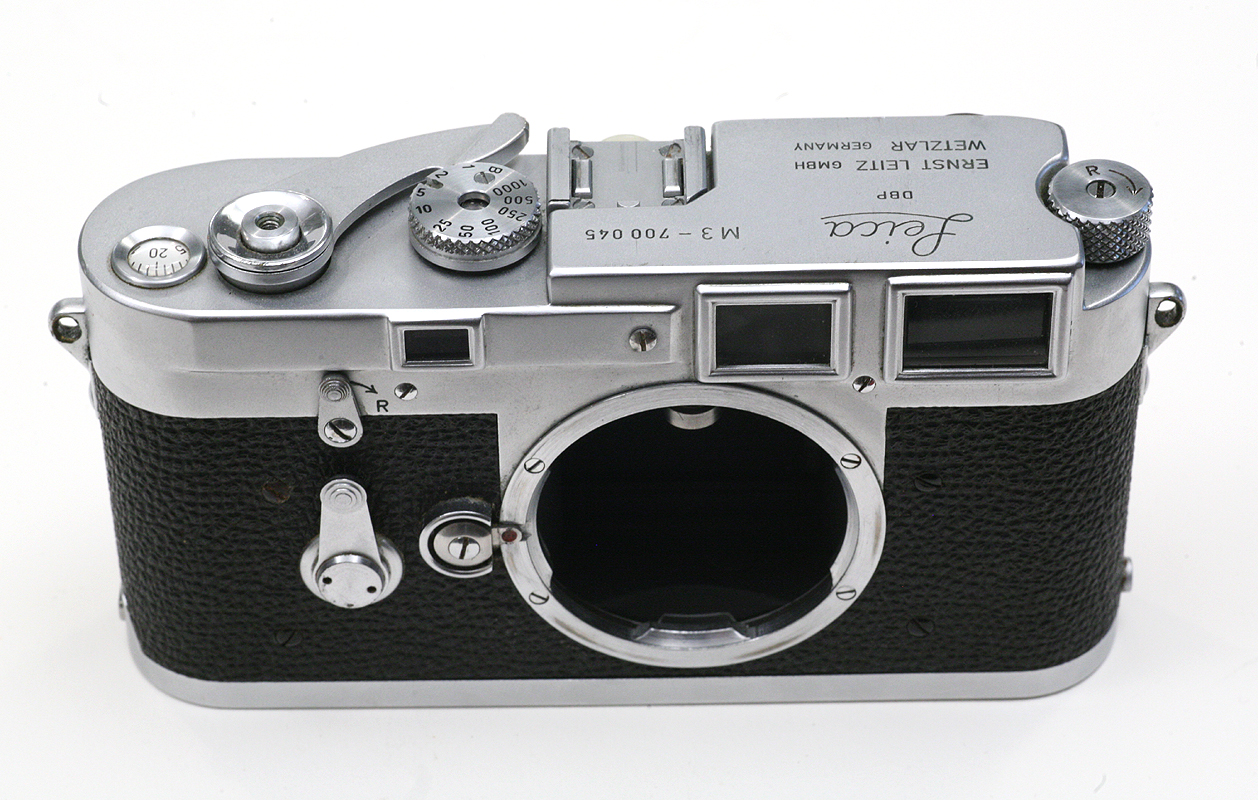
The 45th Leica M3 body. Note the sharp transition from the flat front of the top plate to the
curve of the end. This was discontinued very early in production.
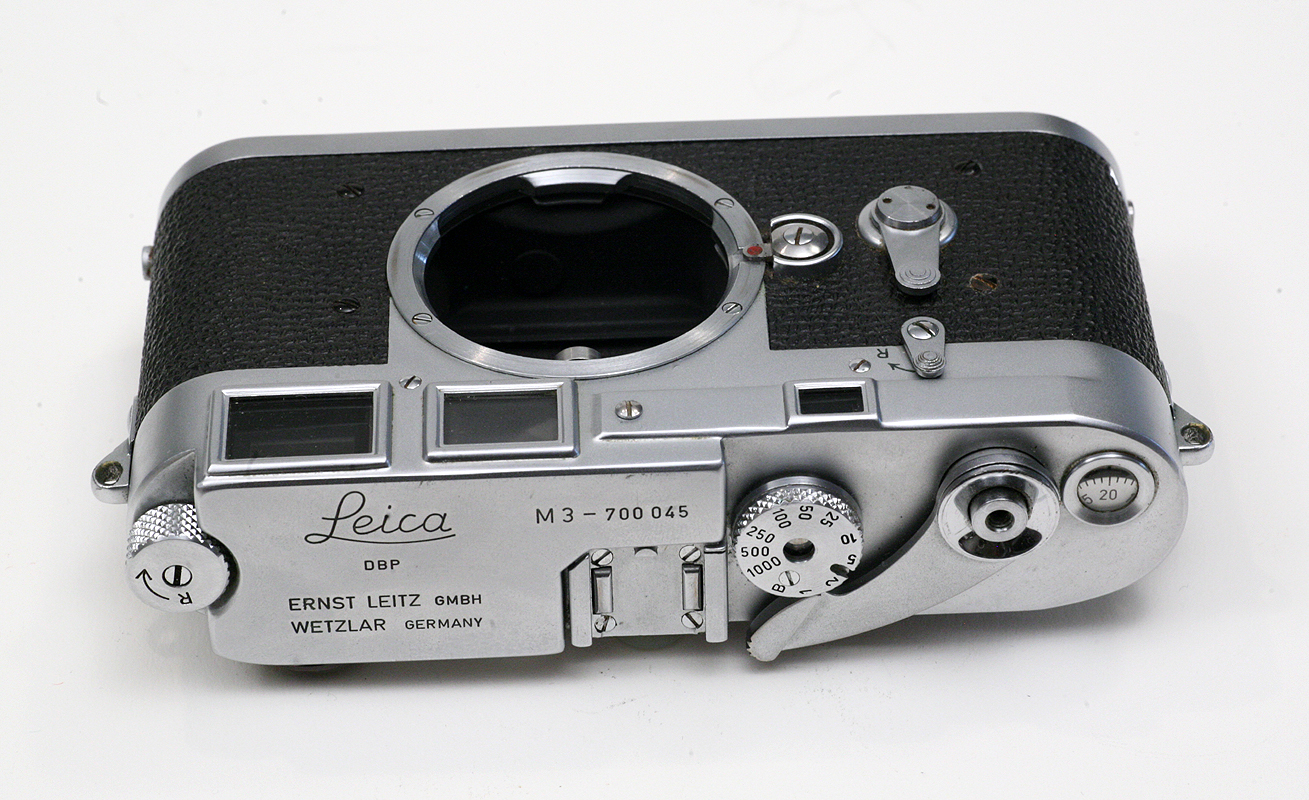
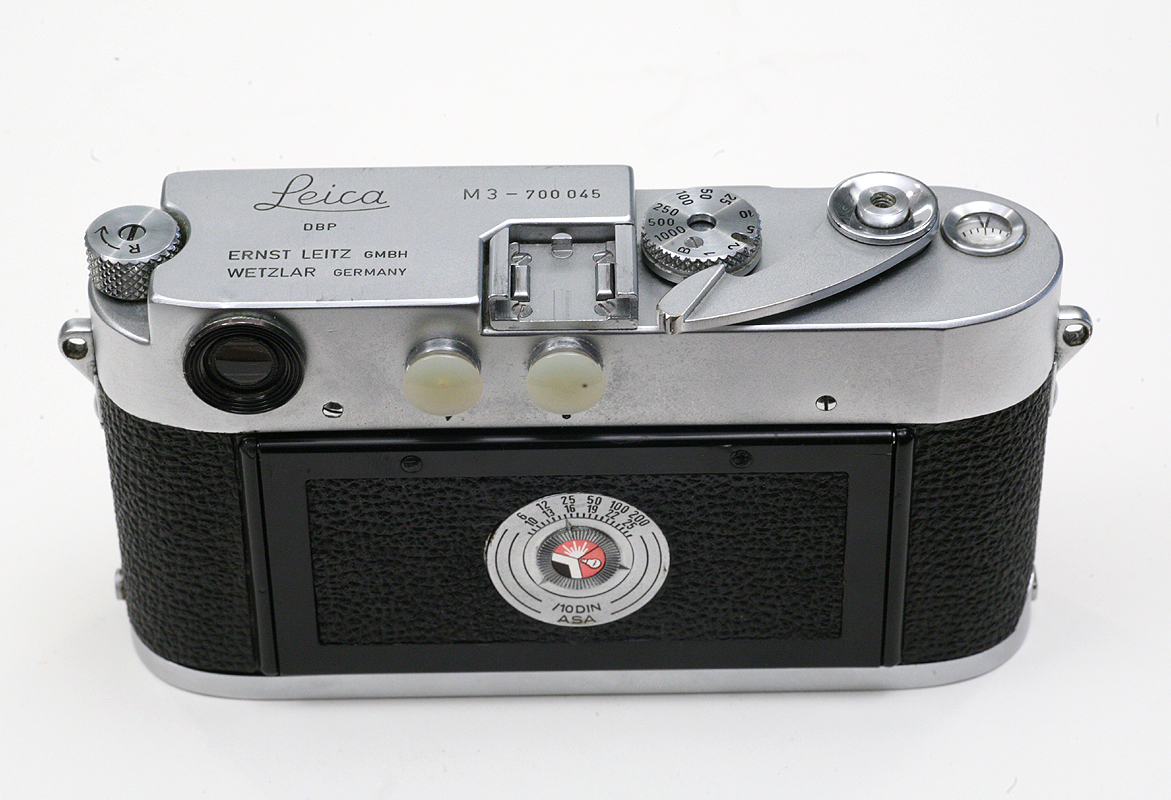
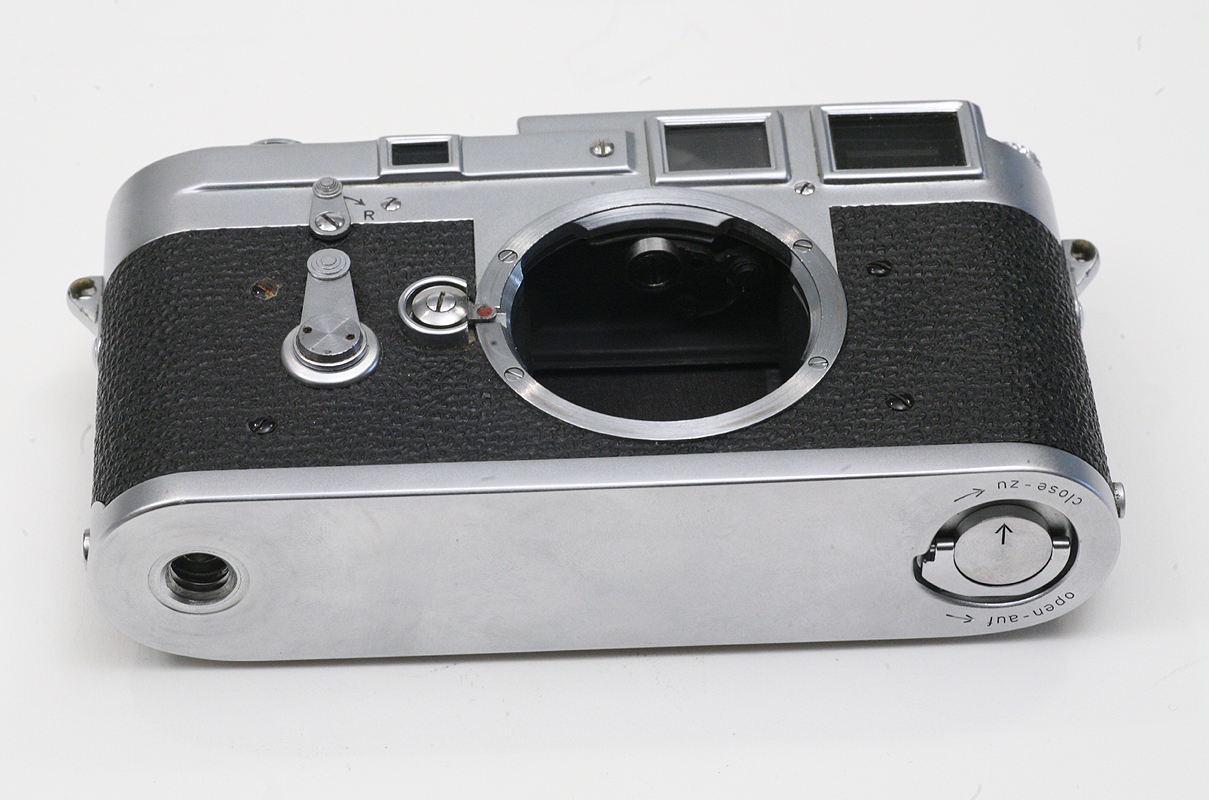
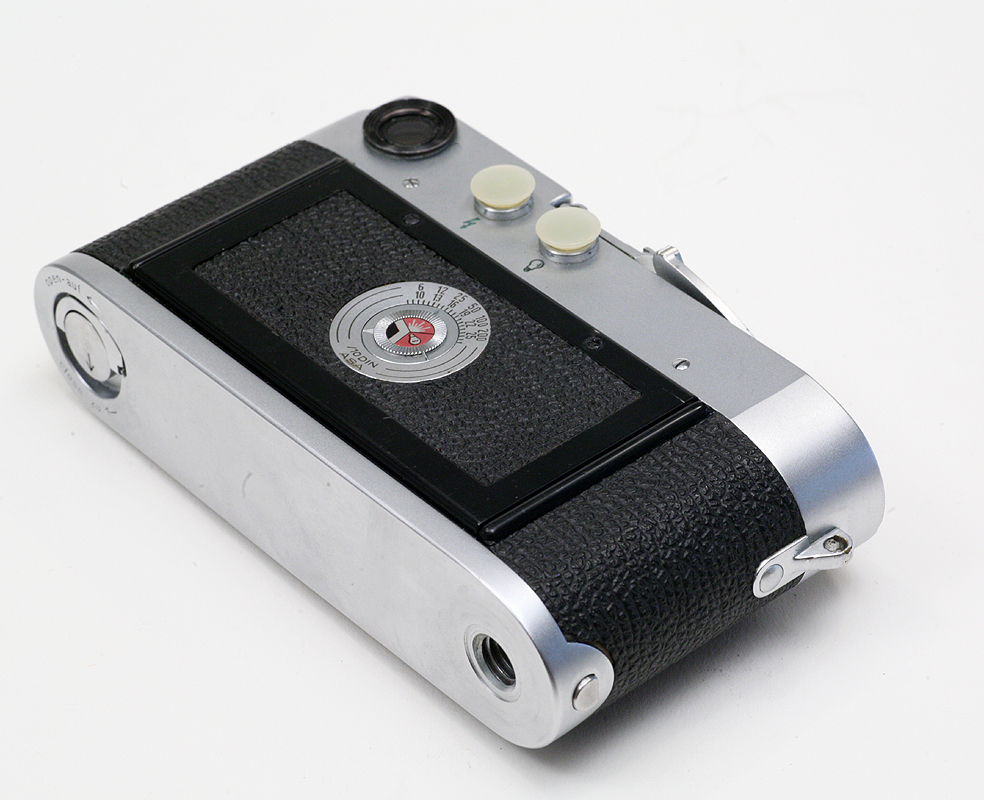
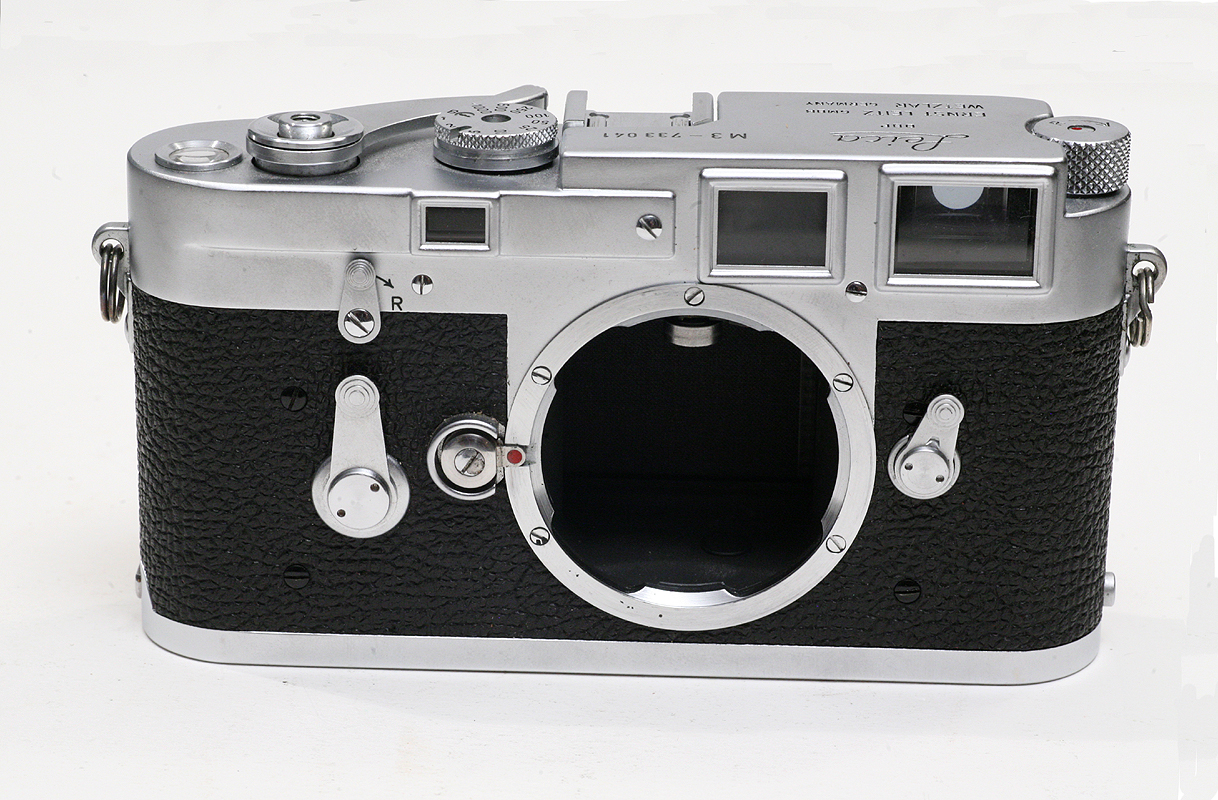
A normal Leica M3 double stroke body in chrome.
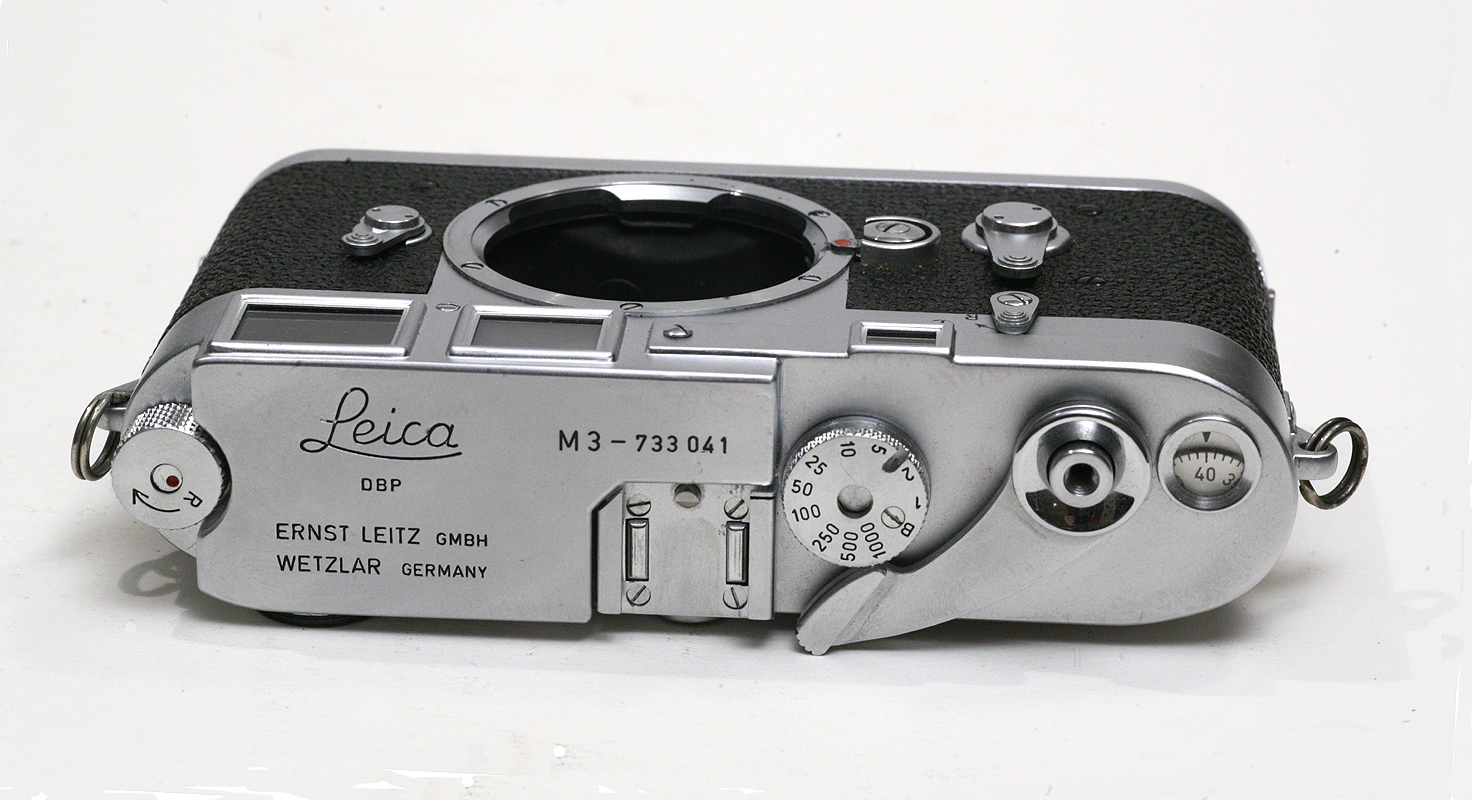
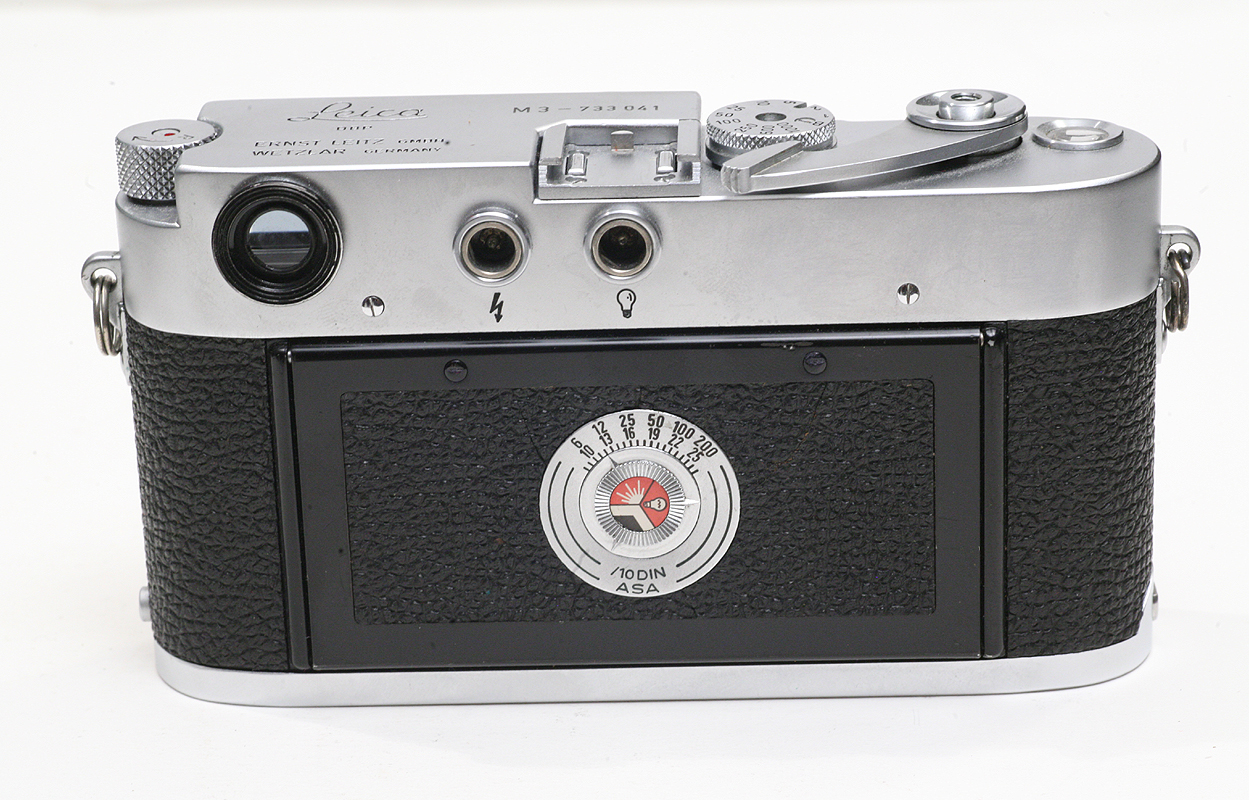
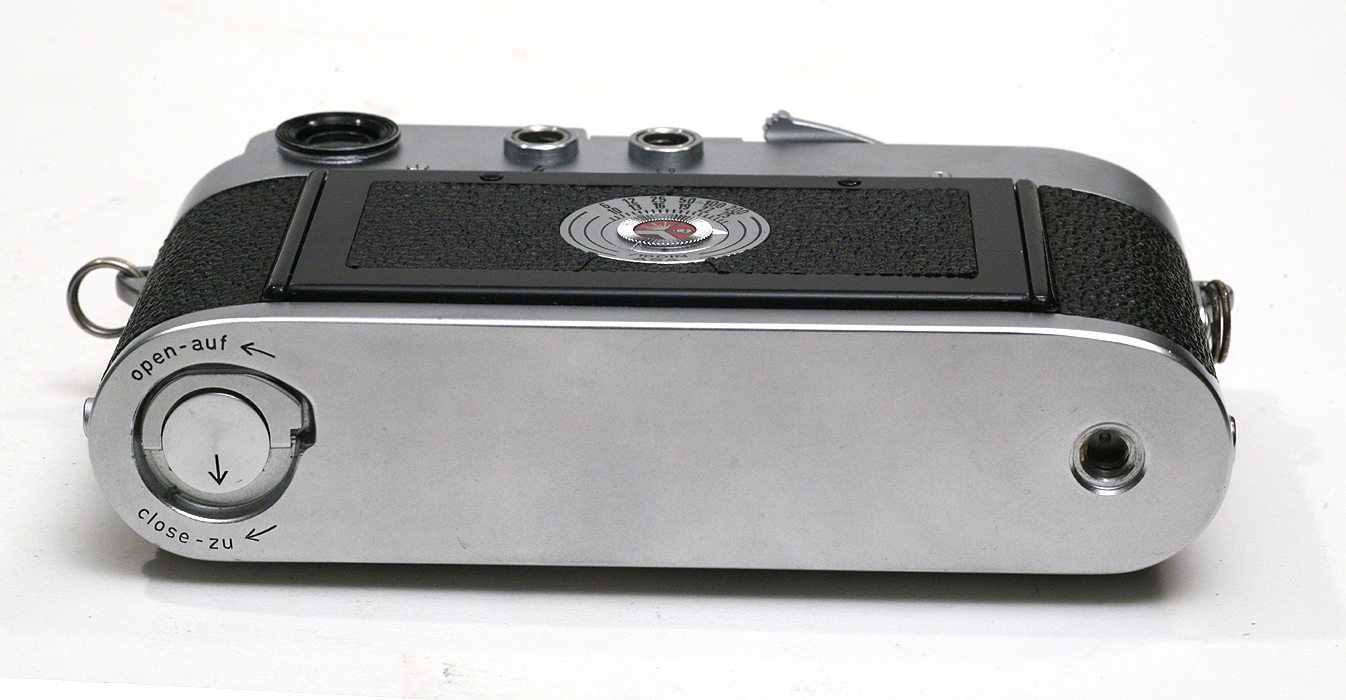
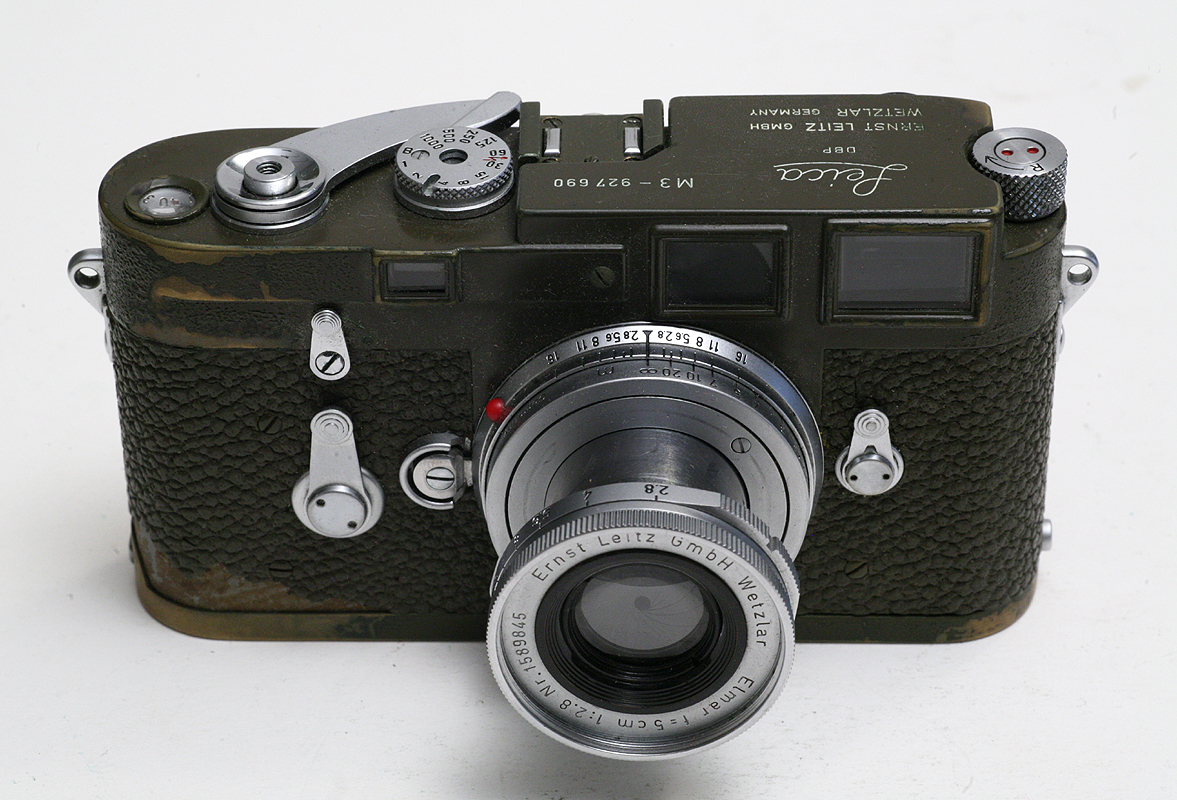
A Leica M3 Bungeseigentum camera in olive finish with 50/2.8 Elmar.
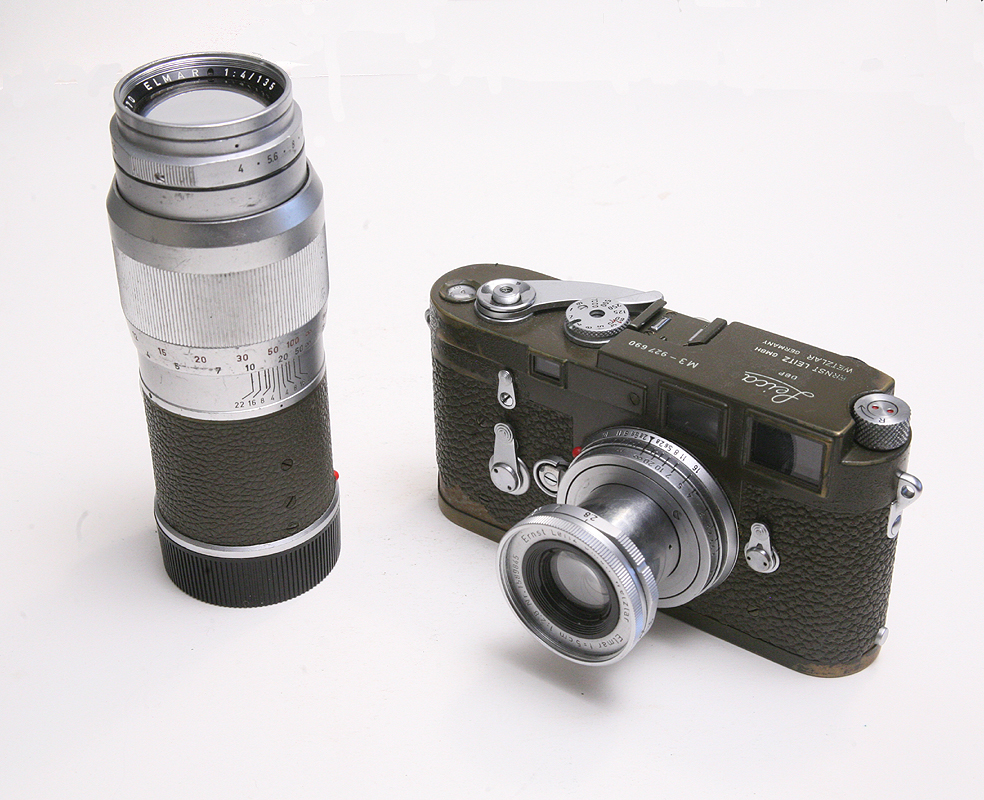
The camera with the matching 135/4 Elmar.
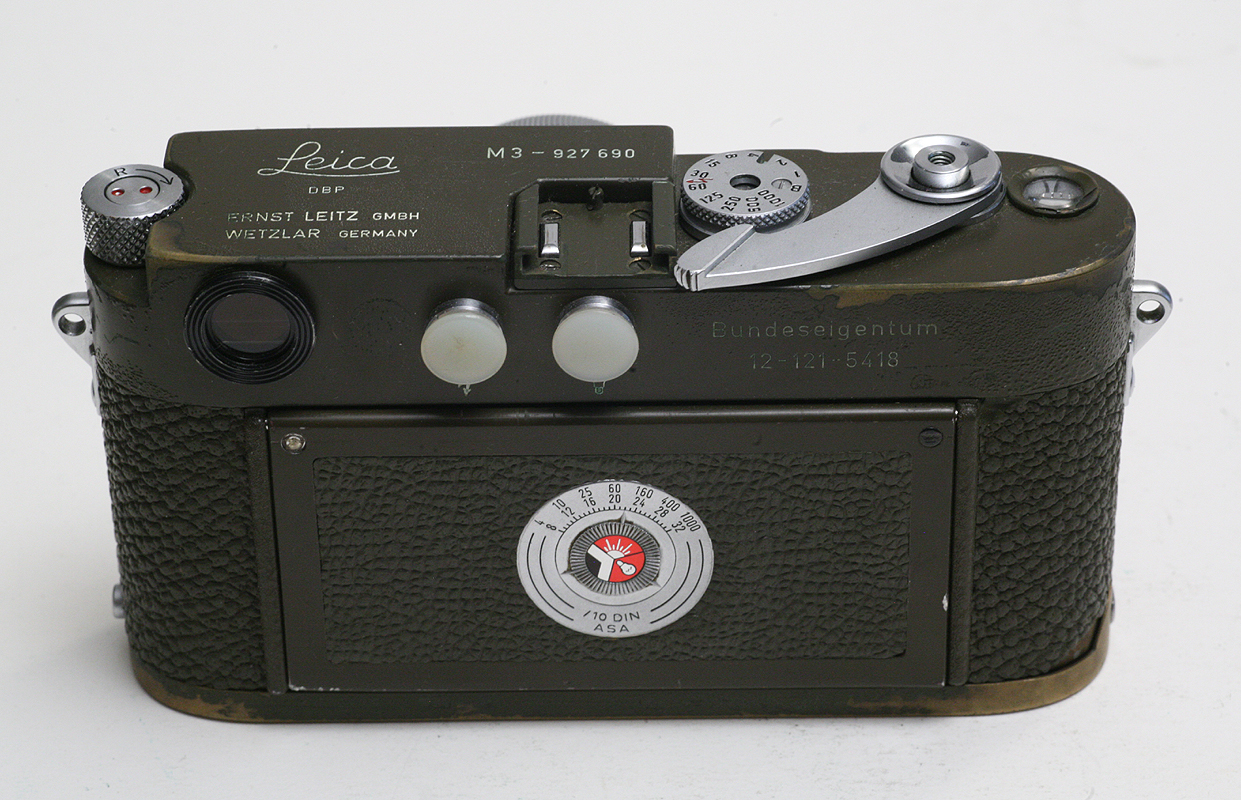
Note the engraving on the back.
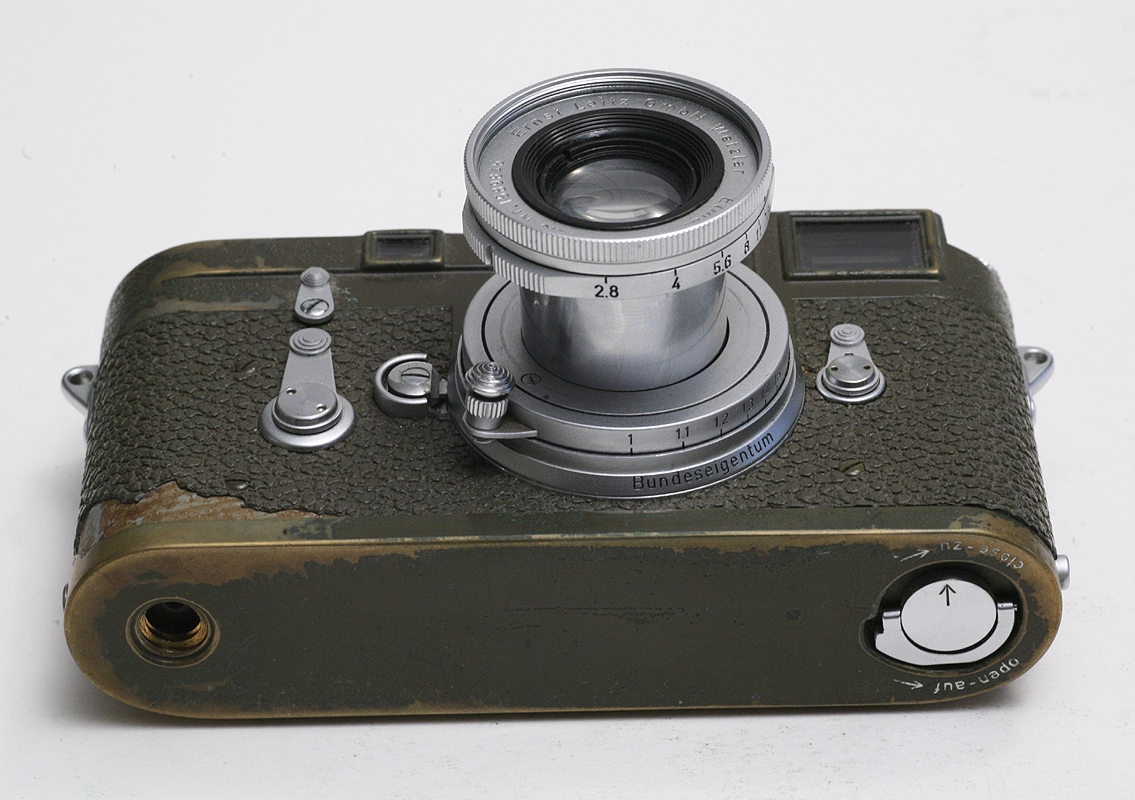
The lens is also engraved Bungeseigentum .
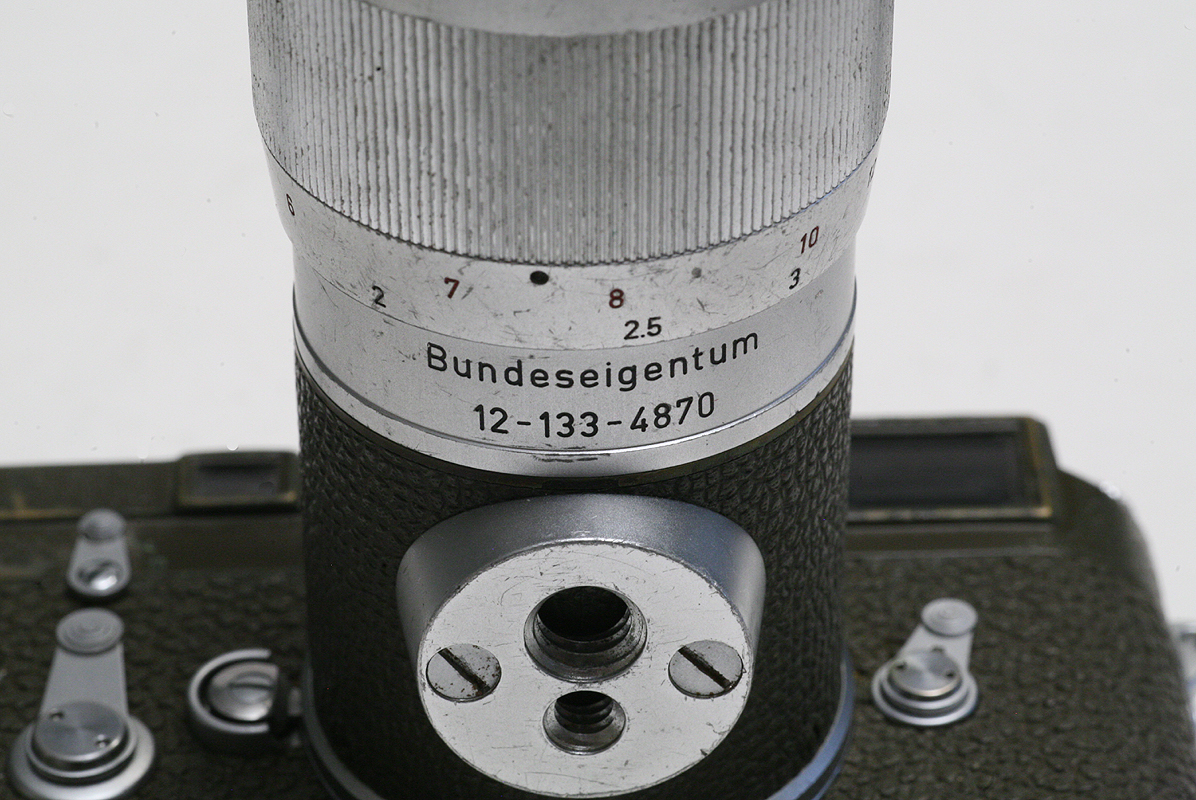
The 135mm lens carries Bungeseigentum engraving as well as the contract number.

The case is dark green and is stamped Bungeseigentum with the contact number on the back.
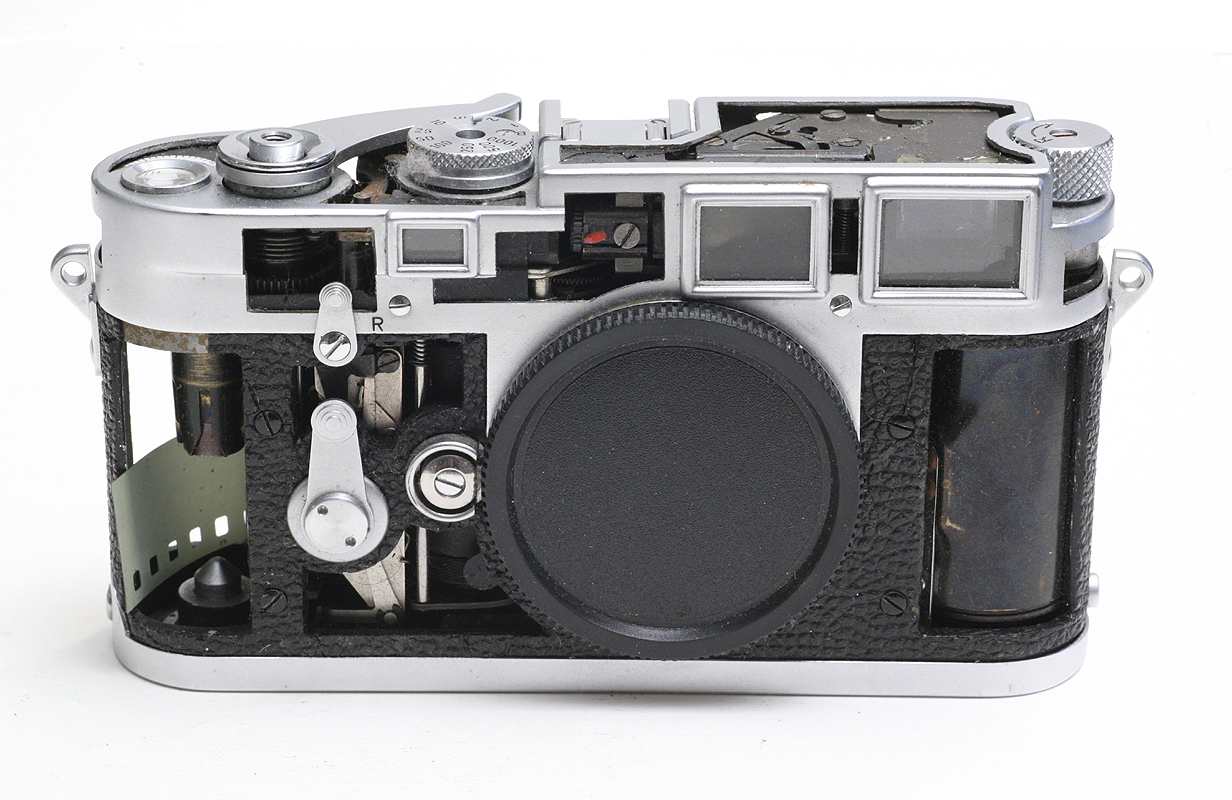
A Leica M3 Schnittmodell, a dealer display model.
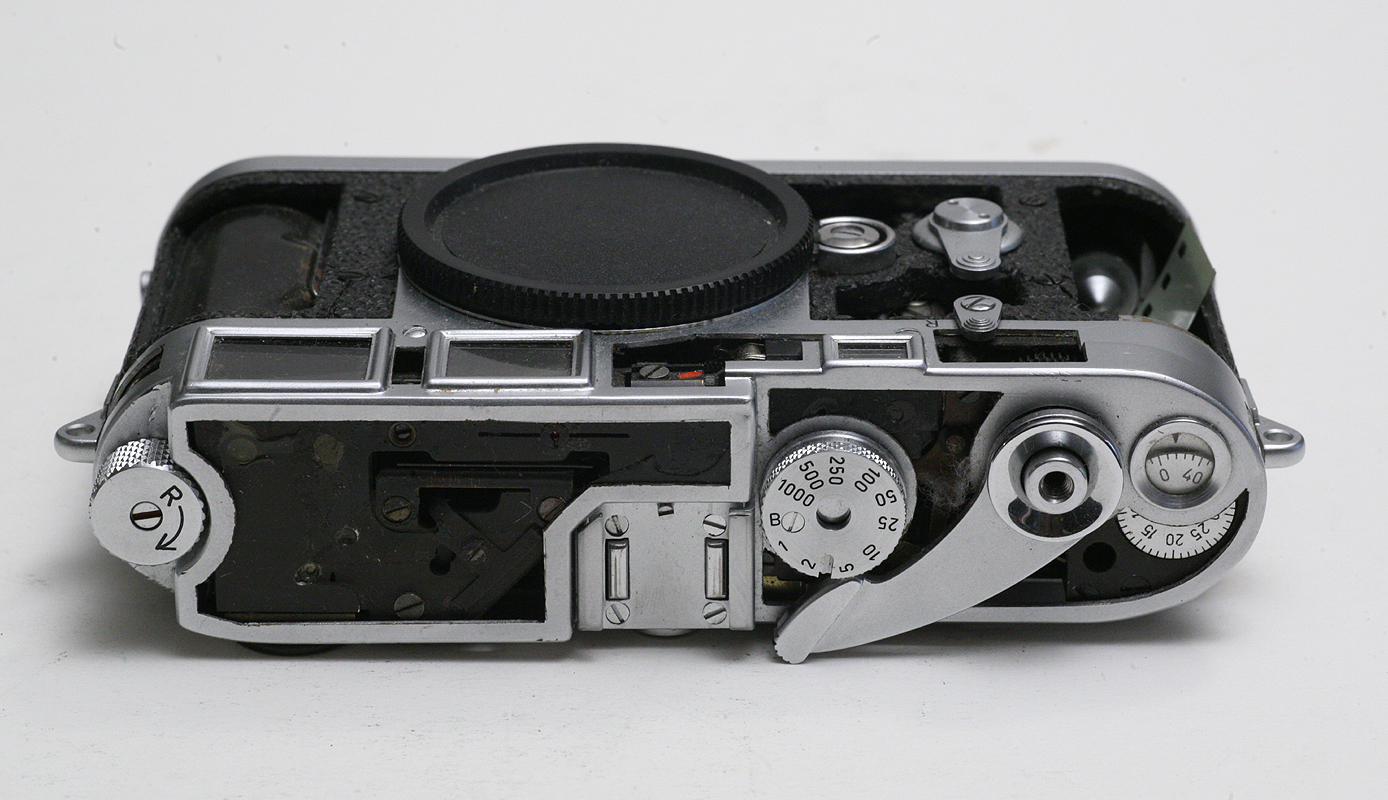
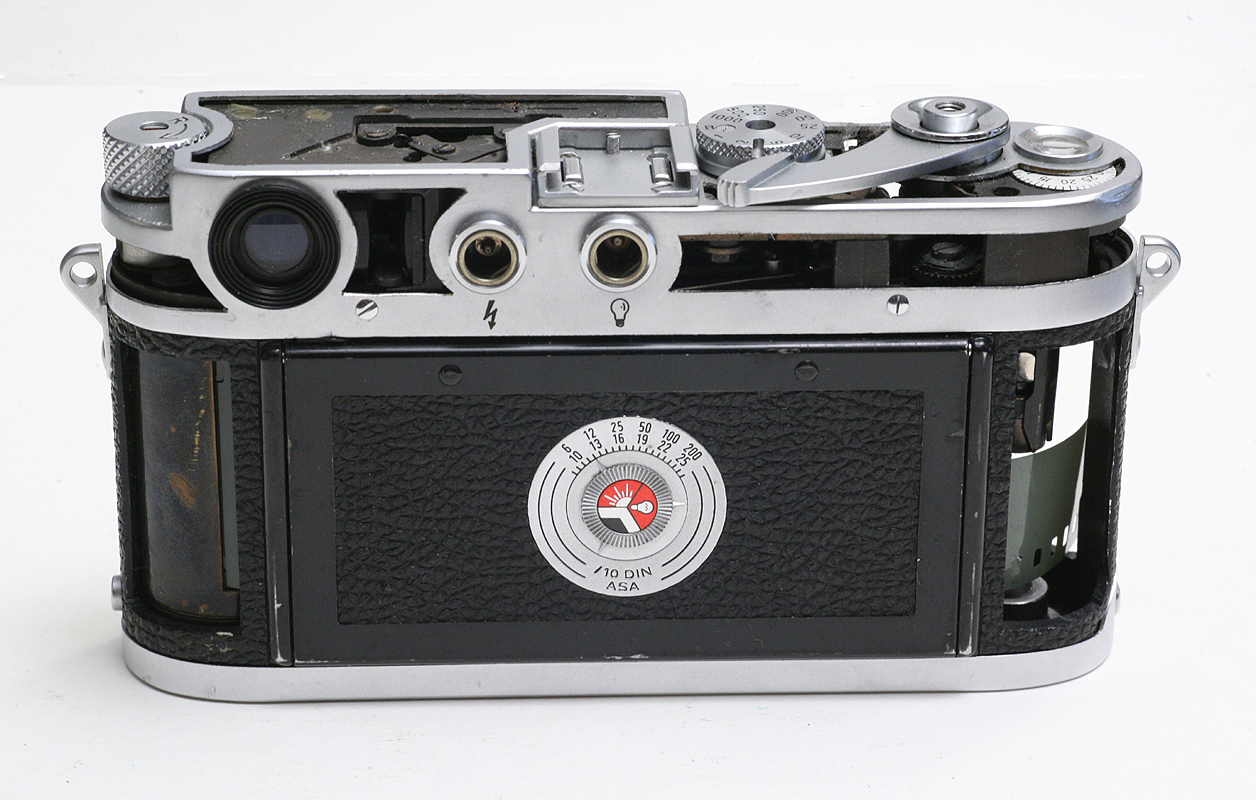
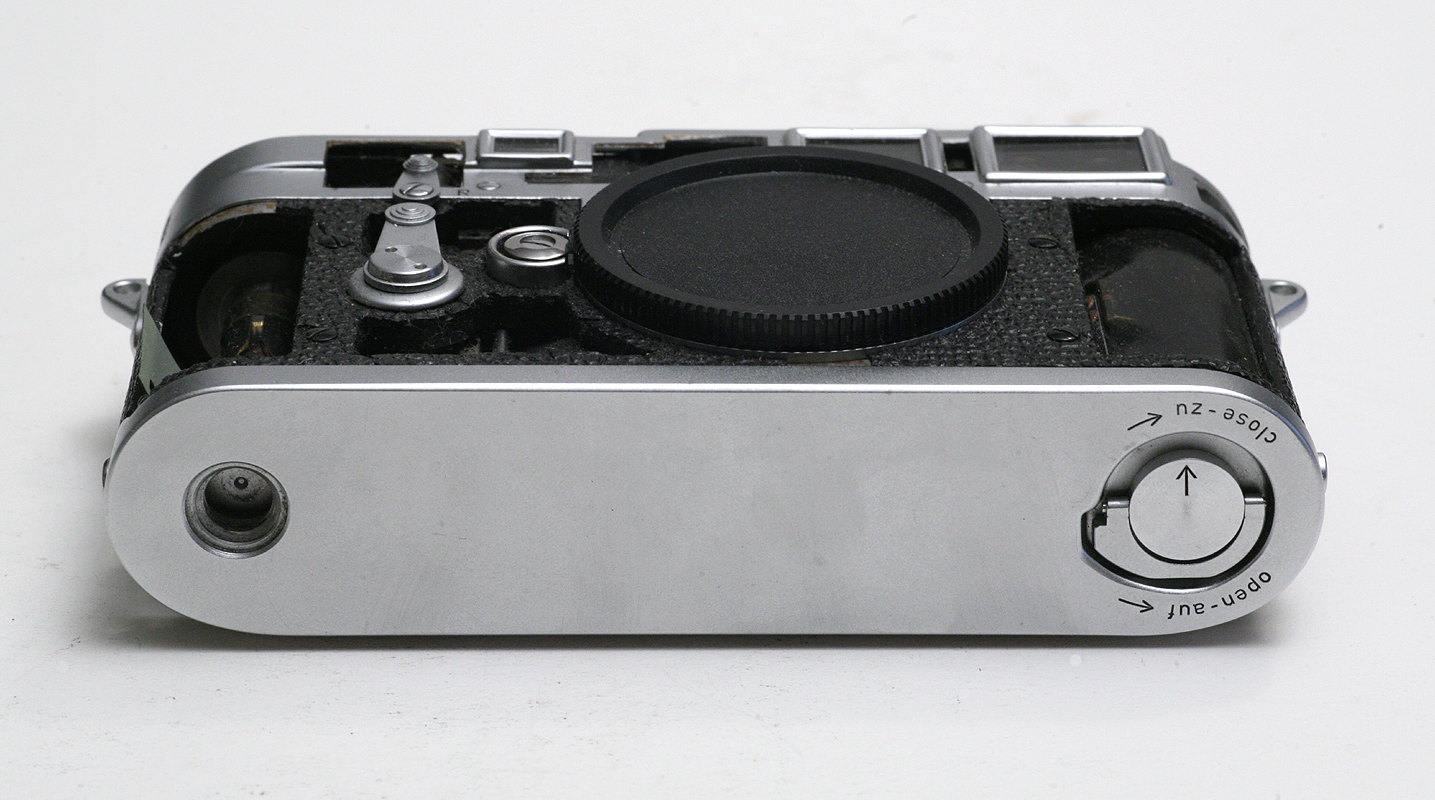
Production figures by year and camera finish:
Year
Chrome Canadian Olive
Black
1954
10,001 -0- -0- -0-
1955
48,951 540 -0- -0-
1956
21,560 990 -0- -0-
1957
33,650 1550 100 -0-
1958
8400 100 -0- -0-
1959
21,822 1150 -0- -0-
1960
16,850 1100 -0- -0-
1961
13,101 800 -0- -0-
1962
10,454 400 -0- 2150
1963
10,000 -0- -0- -
1964
5900 150 -0- 150
1965
9350 200 -0- 150
1966
4905 100 -0- 10
1967
-0- -0- 5 -0-
1968
-0- -0- 38 -0-
Total
215,944 7080 144 3010























Production figures by year and camera finish:
Year | Chrome | Canadian | Olive | Black |
1954 | 10,001 | -0- | -0- | -0- |
1955 | 48,951 | 540 | -0- | -0- |
1956 | 21,560 | 990 | -0- | -0- |
1957 | 33,650 | 1550 | 100 | -0- |
1958 | 8400 | 100 | -0- | -0- |
1959 | 21,822 | 1150 | -0- | -0- |
1960 | 16,850 | 1100 | -0- | -0- |
1961 | 13,101 | 800 | -0- | -0- |
1962 | 10,454 | 400 | -0- | 2150 |
1963 | 10,000 | -0- | -0- | - |
1964 | 5900 | 150 | -0- | 150 |
1965 | 9350 | 200 | -0- | 150 |
1966 | 4905 | 100 | -0- | 10 |
1967 | -0- | -0- | 5 | -0- |
1968 | -0- | -0- | 38 | -0- |
Total | 215,944 | 7080 | 144 | 3010 |
